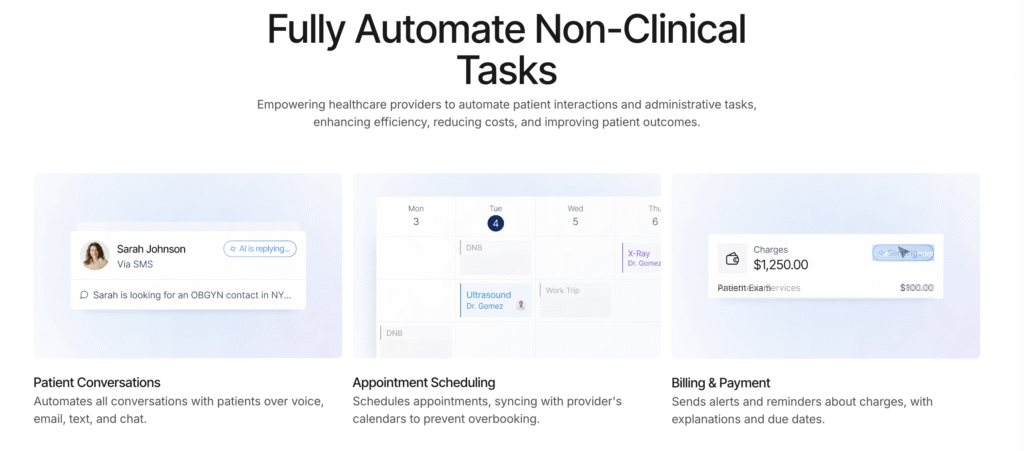The healthcare and housing sectors in the United States present significant challenges for small to medium-sized businesses (SMBs), often marred by inefficiencies and high administrative costs. These industries account for about 40% of the average American household’s expenses, creating an urgent need for reform that invites the integration of automation through artificial intelligence (AI). One compelling case exemplifying this opportunity is EliseAI’s recent fundraising success and its vision to transform these critical sectors.
EliseAI, an AI company focused on optimizing complex healthcare and housing systems, recently secured $250 million in Series E funding, a move that underscores the growing interest in utilizing technology to automate and improve user experiences. The company aims to leverage its resources to rapidly scale its operations, innovate its products, and enhance systems for both patients and residents. For SMB leaders, understanding how to harness similar automation technologies can provide tangible benefits in reducing costs and improving service delivery.
The healthcare industry alone incurs over $600 billion annually in administrative costs due to outdated processes and inefficiencies. EliseAI’s approach involves automating intricate workflows such as scheduling and prior authorizations, where issues often lead to wasted time and resources. SMBs can consider similar methods. By implementing automation platforms like Zapier or Make, businesses can create workflows that trigger specific actions based on preset conditions. For example, a healthcare practice could automate patient follow-up calls after appointments, ensuring that complaints or inquiries are addressed promptly without overburdening staff.
To embark on this journey, businesses should begin by identifying repetitive tasks that consume significant resources. Mapping these processes can provide a clearer picture of where automation can be beneficial. Next, organizations can explore various automation tools tailored to their specific needs. Many platforms offer user-friendly interfaces and templates that simplify the creation of automated workflows, reducing the learning curve and implementation time. For instance, Zapier allows users to connect apps and set automatic actions, meaning an online booking could automatically trigger an appointment confirmation email without additional manual input.
In the housing sector, similar automation strategies can help alleviate operational burdens stemming from rising costs and workforce turnover. EliseAI has developed solutions like AI-Guided Tours and Lease Audits to enable property managers to maintain service quality while minimizing labor costs. SMBs can also adopt cloud-based property management software that automates tasks such as rent collection and maintenance requests. Using such platforms, operators can create automated notifications to remind tenants about upcoming due dates or maintenance check-ups, enhancing the resident experience while freeing staff to focus on more strategic responsibilities.
It’s essential, however, to approach automation with cautious optimism. Not every task should be automated, and blindly implementing technology without a careful evaluation of its relevance can lead to unforeseen risks. For example, relying on automated customer service channels may frustrate users if nuanced inquiries require human intervention. Conducting a thorough needs assessment and continuously reviewing workflows will help identify the right balance between human touch and automation.
The return on investment (ROI) of adopting automation can be significant. Automating workflows can lead to cost reductions, as seen with EliseAI’s potential to cut operational costs by up to 25%. Additionally, enhanced efficiency can improve patient and customer satisfaction, which in turn fosters loyalty. Monitoring key performance indicators (KPIs) post-implementation—such as reduced wait times, increased appointment bookings, and improved tenant communications—will provide measurable insights into the effectiveness of the automation strategy.
Moreover, businesses should remain adaptable as they scale their automation efforts. Continuous learning and adaptation are vital in optimizing automated processes. Engaging staff in the decision-making process can lead to more effective implementations, as frontline employees are often most familiar with the inefficiencies that automation can address. This collaborative approach will not only foster a culture of innovation but also ensure that employees feel valued in the transition.
In conclusion, SMB leaders in healthcare and housing can take a page from EliseAI’s playbook by strategically implementing automation through AI tools and platforms. By diagnosing inefficiencies, selecting relevant automation technologies, and continually assessing their impact, these businesses can achieve smoother operations and enhanced service delivery. Ultimately, a proactive approach toward automation not only positions SMBs for growth but equips them to meet evolving market demands.
FlowMind AI Insight: The judicious application of automation can transform operational efficiencies for SMBs, particularly in challenging sectors like healthcare and housing. By embracing AI tools and cultivating an adaptive culture, businesses can navigate complexities and unlock significant value.
Original article: Read here
2025-08-20 15:38:00

